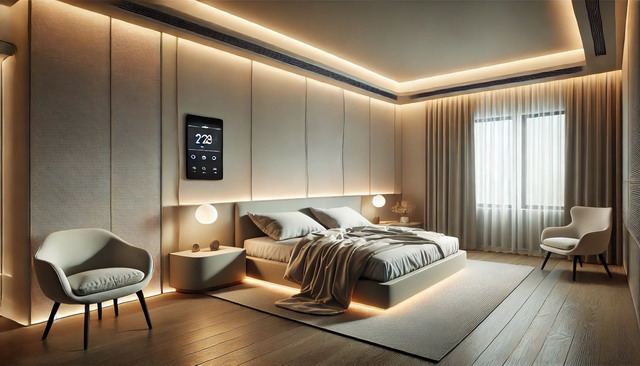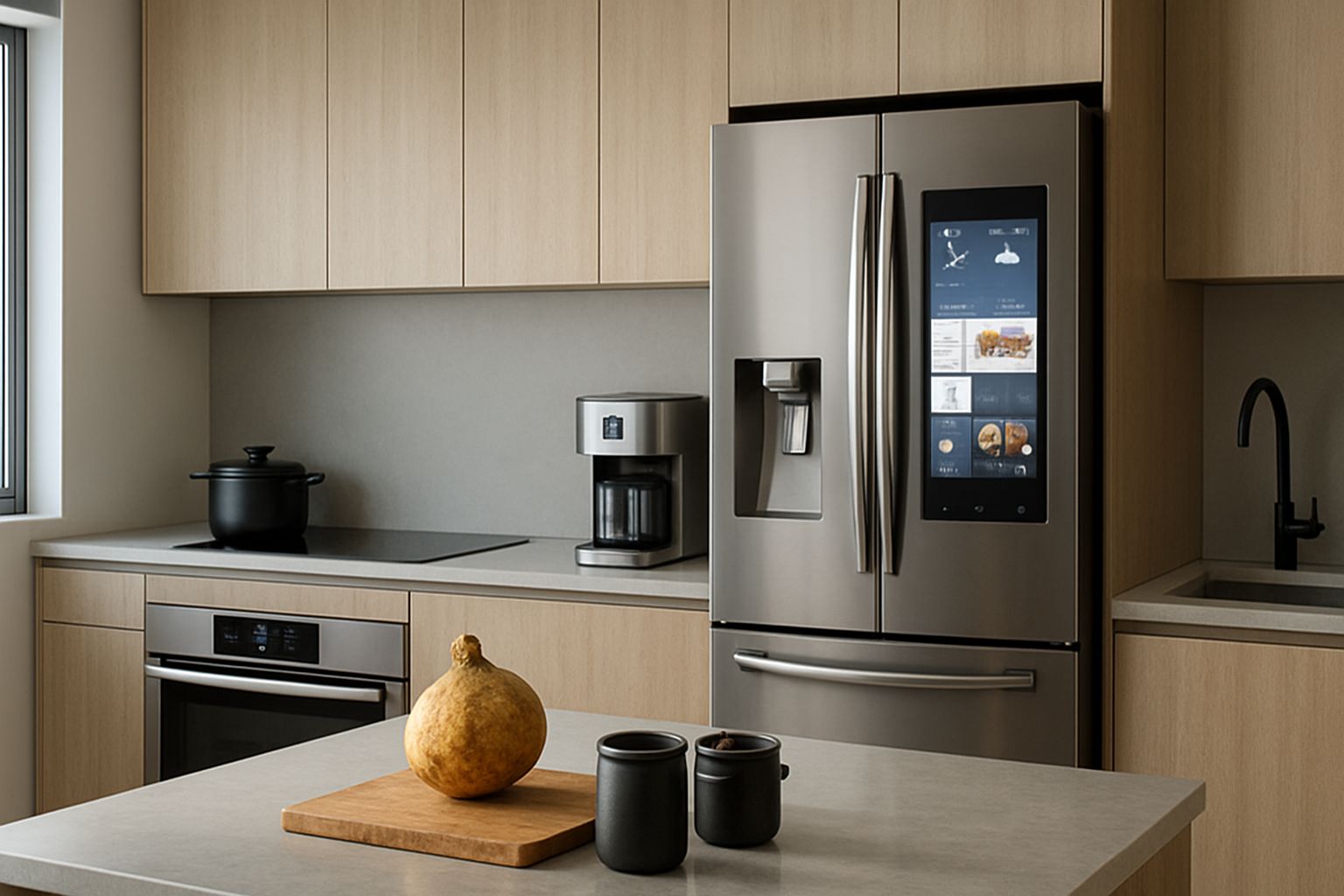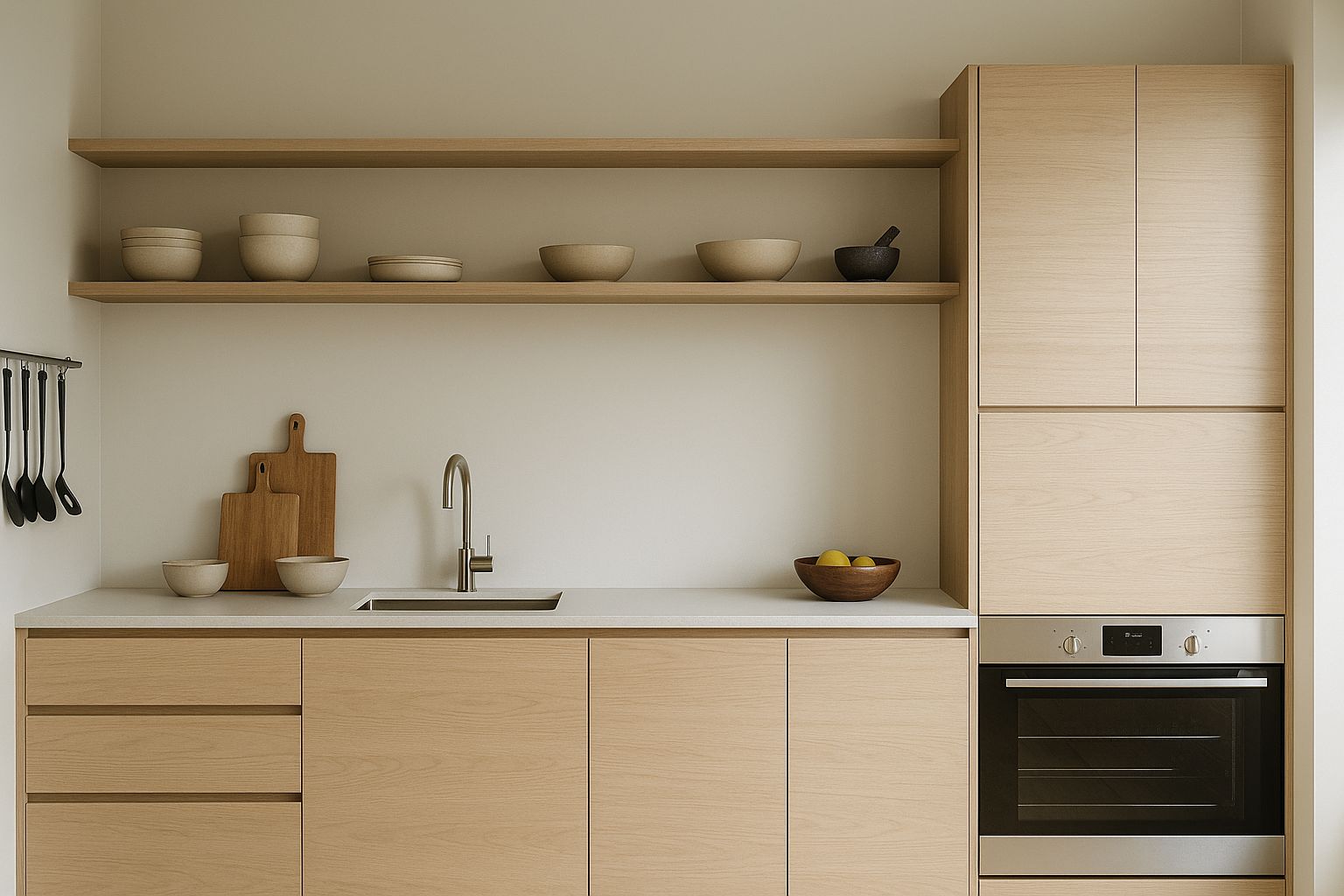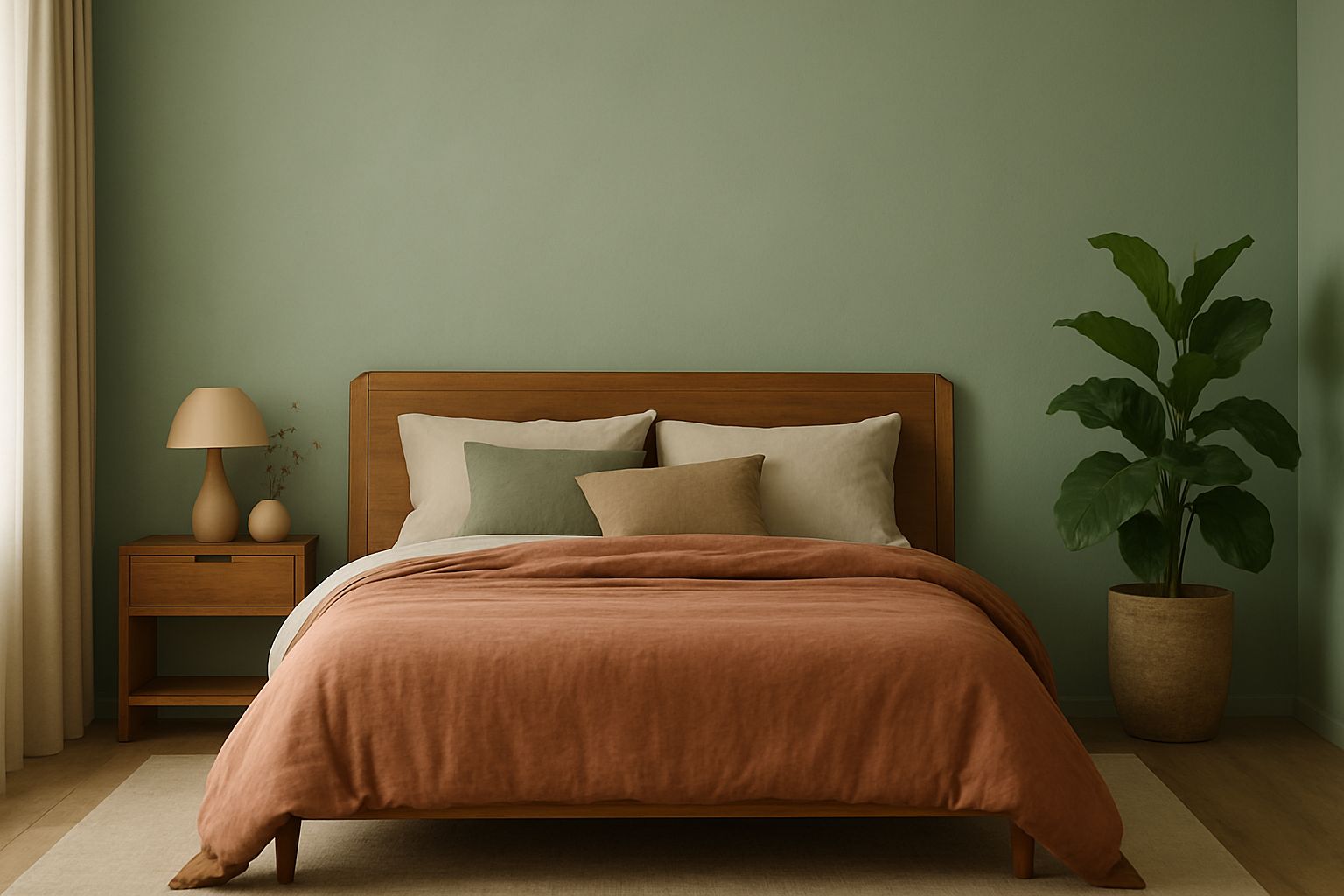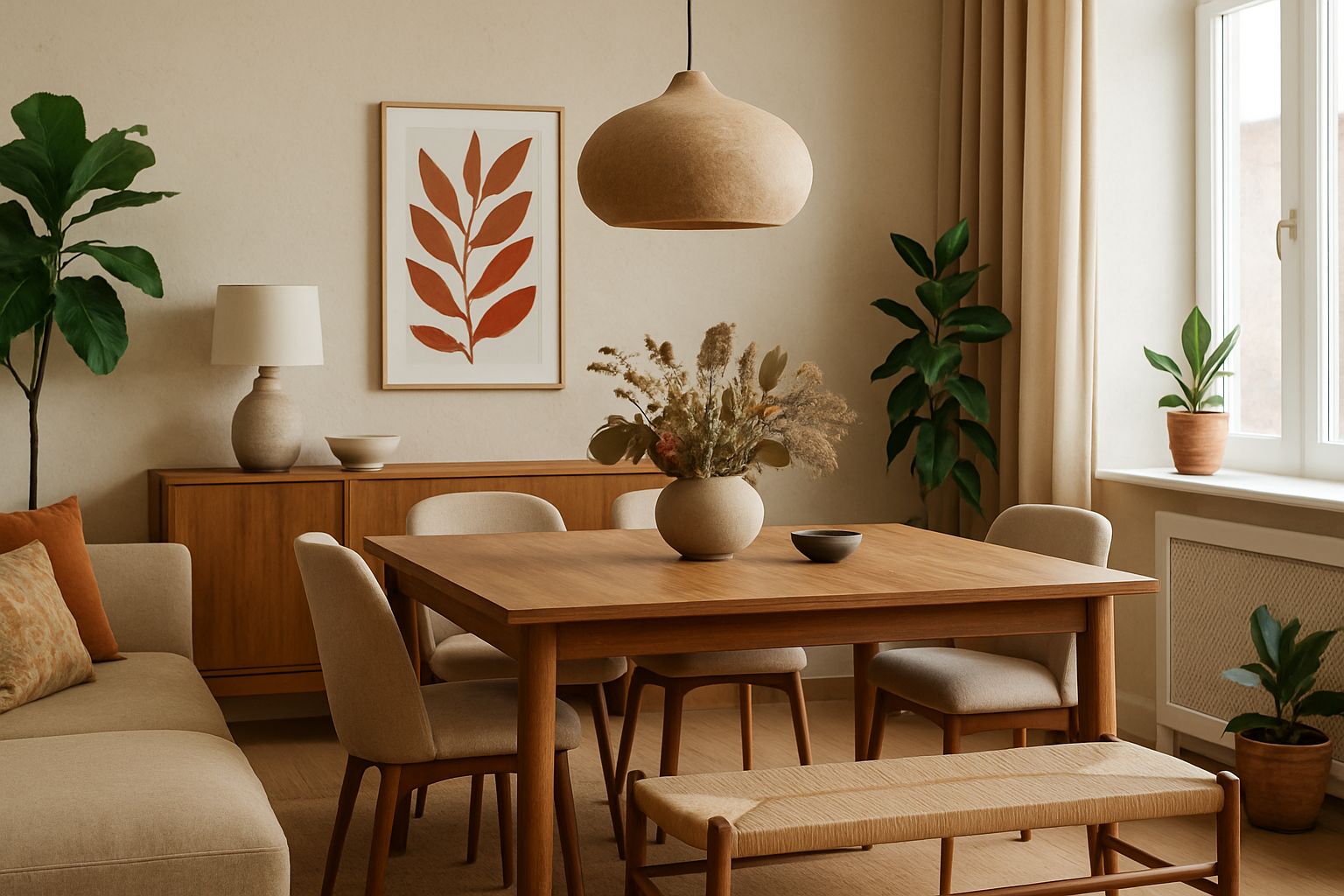As we step into 2026, the world of interior design is evolving faster than ever before. The bedroom, once a simple space for rest, is now becoming a sanctuary of style and technology. With the rise of smart home innovations, our living spaces are being reimagined, and nowhere is this more evident than in the bedroom.
Among the many trends making waves in 2026, smart lighting stands out as a game-changer, blending aesthetics with advanced technology to create the perfect ambiance for any mood. In this post, we’ll explore the latest bedroom decor trends and how smart lighting is set to revolutionize your personal haven.
1. The Rise of Smart Lighting in Bedroom Decor
In recent years, smart technology has permeated almost every aspect of our lives, from how we communicate to how we control our homes. In the realm of interior design, smart lighting has emerged as a significant trend, offering homeowners unprecedented control over their environments. This trend is particularly impactful in the bedroom, where lighting plays a crucial role in setting the tone and mood.
Smart lighting refers to a system of lights that can be controlled remotely or automated to respond to specific commands, such as changing color, dimming, or turning on and off at set times. These systems are typically integrated with other smart home devices, allowing for seamless control via smartphone apps, voice commands, or even automated schedules.
In the context of bedroom decor, smart lighting offers both functional and aesthetic benefits. Functionally, it allows you to create different lighting scenes that match your activities—whether you’re winding down with a book, getting ready for bed, or waking up in the morning. Aesthetically, smart lighting adds a layer of sophistication to your bedroom, enhancing the overall design with customizable colors and brightness levels.
In 2026, the trend is moving toward integrating smart lighting with other elements of bedroom decor, such as furniture, wall colors, and textiles. This integration allows for a harmonious design that not only looks good but also feels good. The ability to control the lighting with precision means that every corner of your bedroom can be perfectly illuminated to match your style and needs.
2. Smart Lighting for a Relaxing Ambiance
The bedroom is a place of rest and relaxation, and lighting plays a crucial role in creating an environment conducive to these activities. One of the key benefits of smart lighting is its ability to create a relaxing ambiance that can be tailored to your preferences. In 2026, we’re seeing a shift towards lighting that not only illuminates but also enhances the mood.
Smart lighting systems offer various modes that can be adjusted to suit different times of the day or specific activities. For example, a warm, soft glow can be ideal for winding down in the evening, while brighter, cooler tones might be more suitable for morning routines. The ability to switch between these modes with a simple voice command or a tap on your smartphone makes it easier than ever to create the perfect atmosphere.
Another exciting development in smart lighting is the introduction of circadian rhythm lighting. This technology mimics the natural progression of sunlight throughout the day, helping to regulate your body’s internal clock. In the morning, the lights gradually brighten, simulating the sunrise and gently waking you up. In the evening, the lights gradually dim, encouraging your body to wind down and prepare for sleep. This approach not only improves sleep quality but also enhances your overall well-being by aligning your bedroom lighting with your natural circadian rhythms.
For those who enjoy reading in bed, smart lighting offers specialized settings that provide just the right amount of light without disturbing your partner. Many smart lighting systems also feature adjustable color temperatures, allowing you to select a cool white light for reading or a warm amber hue for relaxing.
Popular smart lighting brands such as Philips Hue, LIFX, and Nanoleaf are leading the way in this trend, offering products that combine functionality with style. These systems are designed to be easy to install and use, with intuitive apps that let you control every aspect of your lighting. Whether you’re looking to create a cozy, intimate setting or a bright, invigorating space, smart lighting offers endless possibilities for transforming your bedroom into a personalized retreat.
3. Customizable Smart Lighting for Personalized Decor
One of the most exciting aspects of smart lighting is its ability to personalize your bedroom decor. In 2026, personalization is key, and smart lighting is leading the charge by allowing you to tailor your bedroom’s ambiance to reflect your unique style and preferences.
With smart lighting, you can customize the color, brightness, and even the positioning of your lights to create a space that is truly your own. Color-changing LED bulbs, for example, can be adjusted to match your mood or the season. You might choose cool blues and greens for a tranquil, spa-like atmosphere in the summer, or warm oranges and reds for a cozy, autumnal feel in the winter.
Beyond just changing colors, smart lighting allows you to create dynamic lighting scenes that can transform the entire look of your bedroom with a single command. Imagine walking into your bedroom and saying, “Alexa, set the mood for relaxation,” and instantly, your lights dim to a soft, warm glow, the shades lower, and your favorite calming playlist begins to play. This level of customization brings a new level of luxury and comfort to bedroom decor, making your space not just a room, but an experience.
Another way smart lighting enhances personalization is through the use of zoning. Zoning allows you to control different areas of your bedroom independently, so you can have bright, focused lighting in your dressing area while keeping the rest of the room in a softer, more ambient light. This feature is particularly useful in larger bedrooms or multi-functional spaces where different activities require different lighting conditions.
In addition to enhancing your bedroom’s functionality, smart lighting can also serve as a focal point in your decor. Creative use of light strips, wall panels, and fixtures can highlight architectural features, accentuate artwork, or even serve as art in their own right. The possibilities are virtually limitless, giving you the freedom to experiment with different looks and find the perfect setup for your space.
As we move further into 2026, the trend towards personalized smart lighting shows no signs of slowing down. Homeowners are increasingly seeking out ways to make their spaces reflect their personalities, and smart lighting offers a simple yet effective way to achieve this. By combining cutting-edge technology with creative design, you can transform your bedroom into a space that is not only functional but also uniquely yours.
With smart lighting leading the way, bedroom decor in 2026 is set to become more personalized, functional, and stylish than ever before. Whether you’re looking to create a relaxing retreat, a vibrant creative space, or a minimalist haven, the right lighting can make all the difference. As you explore the latest trends and innovations, consider how smart lighting can elevate your bedroom decor and create a space that truly reflects who you are.
4. Integration with Smart Home Systems
As technology continues to advance, our homes are becoming more interconnected, with various devices working together seamlessly to create a unified living experience. In 2026, smart lighting has become an integral part of this interconnected ecosystem, particularly in the bedroom, where convenience and comfort are paramount.
The integration of smart lighting with other smart home systems allows for a truly automated and effortless experience. Imagine walking into your bedroom, and with a simple voice command, your lights adjust to the perfect brightness, your favorite relaxing music begins to play, and the temperature is set to your ideal sleeping conditions. This level of automation is not just about convenience; it’s about creating an environment that responds to your needs and enhances your lifestyle.
One of the most popular ways to integrate smart lighting with other systems is through the use of smart hubs and assistants like Amazon Alexa, Google Assistant, or Apple HomeKit. These platforms allow you to control your lighting along with other smart devices—such as thermostats, blinds, and entertainment systems—all from a single app or through voice commands. This means you can set up routines that automatically adjust the lighting and other settings based on the time of day, your activities, or even your mood.
For example, you could create a “Good Morning” routine that gradually brightens the lights to mimic the sunrise, opens the blinds, and starts playing your favorite morning playlist. Conversely, a “Good Night” routine could dim the lights, lower the temperature, and turn off all electronics, helping you wind down and prepare for a restful night’s sleep.
Another exciting development in smart lighting integration is the use of sensors and automation. Motion sensors can detect when you enter or leave a room, automatically adjusting the lighting based on your presence. This is particularly useful in the bedroom, where you might want the lights to turn on softly as you wake up in the middle of the night or turn off automatically when you fall asleep.
Smart lighting can also be programmed to work with security systems, providing added peace of mind. For instance, you can set your bedroom lights to flash or turn on if your security system detects an intruder, alerting you to potential danger. This level of integration not only enhances your home’s safety but also ensures that your lighting is always working in sync with the rest of your smart home.
In 2026, the trend towards a fully integrated smart home continues to grow, with more and more homeowners embracing the convenience and comfort that comes with automation. Smart lighting is at the forefront of this movement, offering endless possibilities for creating a personalized and connected bedroom environment.
5. Sustainable and Energy-Efficient Lighting Solutions
As sustainability becomes an increasingly important consideration in home design, energy-efficient lighting solutions are taking center stage in 2026. Smart lighting, with its ability to reduce energy consumption and minimize environmental impact, is a key player in this trend.
One of the primary benefits of smart lighting is its energy efficiency. Traditional lighting systems often waste energy by being left on when not needed or by using more power than necessary to achieve the desired brightness. Smart lighting systems, on the other hand, are designed to be highly efficient, using only the energy required to produce the right amount of light at the right time.
Many smart lighting systems are equipped with LED bulbs, which are known for their long lifespan and low energy consumption. LEDs use significantly less power than traditional incandescent bulbs, and they also generate less heat, making them a more sustainable choice for your home. Additionally, smart lighting systems often include features like dimming and scheduling, which further reduce energy usage by allowing you to control when and how much light is used.
In 2026, we’re seeing a growing emphasis on sustainability in bedroom decor, with homeowners seeking out eco-friendly products that align with their values. Smart lighting fits perfectly into this trend, offering a way to reduce your carbon footprint while still enjoying the benefits of modern technology. Many smart lighting brands are also committed to sustainability, offering products made from recycled materials and designed with energy conservation in mind.
Another way smart lighting contributes to sustainability is through its ability to be programmed for optimal energy use. For example, you can set your lights to turn off automatically when you leave the room or dim during the day when natural light is abundant. This level of control helps to minimize energy waste and can also lead to significant savings on your electricity bill.
In addition to being energy-efficient, smart lighting can also enhance the overall sustainability of your home by integrating with other green technologies. For instance, smart lighting can be connected to solar panels, allowing you to power your lights with renewable energy. This not only reduces your reliance on fossil fuels but also contributes to a more sustainable lifestyle.
As we move further into 2026, the demand for sustainable and energy-efficient home solutions continues to rise. Smart lighting is leading the way in this movement, offering a practical and stylish way to reduce your environmental impact while still enjoying the benefits of cutting-edge technology.
6. Minimalist Bedroom Decor with Smart Lighting
Minimalism remains a dominant trend in interior design for 2026, with more people opting for clean, uncluttered spaces that promote relaxation and mindfulness. In the bedroom, where tranquility and simplicity are key, smart lighting plays a crucial role in enhancing a minimalist decor.
The beauty of minimalist design lies in its simplicity, and smart lighting complements this aesthetic perfectly. With sleek, unobtrusive designs and the ability to be seamlessly integrated into your space, smart lighting fixtures blend effortlessly with minimalist decor. Whether it’s a discreet LED strip hidden beneath your bed frame or a set of wall-mounted lights that provide subtle illumination, smart lighting can enhance the minimalist vibe without overwhelming the space.
One of the key principles of minimalism is the idea of “less is more,” and smart lighting aligns with this concept by offering multi-functional solutions that reduce the need for multiple fixtures. For example, a single smart bulb can change colors, adjust brightness, and be programmed to follow a schedule, eliminating the need for multiple lamps or light sources. This not only helps to keep your bedroom clutter-free but also adds to the overall sense of calm and order.
In addition to being functional, smart lighting can also serve as a design element in a minimalist bedroom. The clean lines and modern aesthetics of smart light fixtures make them ideal for accentuating the architectural features of your space. For instance, a simple pendant light with a geometric shape can become a focal point in an otherwise understated room, adding a touch of elegance without detracting from the minimalist ethos.
Furthermore, smart lighting can be used to create a sense of space in smaller bedrooms. By strategically placing lights to highlight certain areas or using dimmers to create depth, you can make a small room feel larger and more open. This is particularly useful in urban settings where space is at a premium and every square foot counts.
In 2026, the combination of minimalist decor and smart lighting offers a powerful way to create a serene and stylish bedroom environment. By embracing simplicity and using technology to enhance the space, you can transform your bedroom into a haven of tranquility that reflects the principles of modern minimalism.
As we continue to explore the latest trends in bedroom decor for 2026, it’s clear that smart lighting is more than just a functional addition to your space. It’s a tool that can enhance your lifestyle, contribute to sustainability, and elevate the design of your bedroom in ways that were once unimaginable. Whether you’re drawn to the idea of a fully integrated smart home, seeking out sustainable solutions, or embracing a minimalist aesthetic, smart lighting offers endless possibilities for transforming your bedroom into a modern sanctuary.
7. Smart Lighting and Sleep Quality
Sleep quality has become a significant focus for many as we recognize its impact on overall health and well-being. In 2026, smart lighting is playing a crucial role in helping people achieve better sleep by aligning with natural circadian rhythms and offering customized settings to enhance rest.
One of the most innovative features of smart lighting is its ability to simulate natural light patterns. Circadian rhythm lighting, which mimics the natural progression of daylight, helps regulate your body’s internal clock. By adjusting the color temperature and brightness throughout the day, smart lighting can promote wakefulness in the morning and relaxation in the evening, ultimately leading to improved sleep quality.
For example, in the morning, smart lights can gradually brighten with cool, blue-tinted light that simulates the rising sun, helping you wake up naturally and feel more alert. As the day progresses, the lighting can shift to warmer tones, preparing your body for rest. In the evening, the lights can dim and take on a warm amber hue, signaling to your brain that it’s time to wind down and get ready for sleep.
In addition to circadian lighting, smart lighting systems offer other features that can enhance sleep. For instance, you can set your lights to gradually dim over a set period, allowing you to drift off to sleep naturally. You can also program your lights to turn off completely at a specific time, ensuring that you aren’t disturbed by bright lights during the night.
Furthermore, smart lighting can be integrated with other sleep-enhancing technologies, such as smart mattresses and sleep trackers. By syncing your lighting with these devices, you can create a holistic sleep environment that adapts to your individual needs. For example, if your sleep tracker detects that you’re waking up frequently during the night, it can adjust the lighting to a more soothing setting to help you fall back asleep.
Smart lighting also offers practical solutions for those late-night awakenings. Motion-activated lights can provide just enough illumination to safely navigate your bedroom without fully waking you up. This can be particularly helpful for families with young children or those who need to get up frequently during the night.
As sleep science continues to evolve, the integration of smart lighting into bedroom decor is proving to be a valuable tool for improving sleep quality. In 2026, we’re seeing a growing awareness of the importance of sleep, and smart lighting is leading the way in creating environments that promote rest, relaxation, and overall well-being.
8. Future Trends in Bedroom Smart Lighting
The rapid pace of technological innovation shows no signs of slowing down, and the future of smart lighting in bedroom decor is full of exciting possibilities. As we look beyond 2026, several emerging trends are set to shape the way we think about lighting and its role in our homes.
One of the most anticipated trends is the continued development of artificial intelligence (AI) in smart lighting systems. In the near future, AI-driven lighting systems could learn your habits and preferences over time, automatically adjusting the lighting based on your activities, mood, and even the weather. For example, your bedroom lights could brighten on a gloomy day to compensate for the lack of natural light, or dim automatically when you start watching a movie in bed.
Another exciting trend is the integration of smart lighting with augmented reality (AR) and virtual reality (VR) technologies. Imagine being able to transform your bedroom into a serene beach or a cozy cabin in the woods with just a few voice commands. AR and VR could allow you to experience different environments without leaving the comfort of your home, all enhanced by smart lighting that adapts to the virtual surroundings.
We’re also likely to see advancements in the sustainability of smart lighting systems. As environmental concerns continue to grow, manufacturers are focusing on creating products that are not only energy-efficient but also made from sustainable materials. Future smart lighting systems may incorporate solar power or other renewable energy sources, further reducing their environmental impact.
In terms of design, the trend towards minimalism and customization is expected to continue. We can anticipate even more streamlined and discreet lighting solutions that blend seamlessly with your bedroom decor. This could include innovations like invisible light sources, where the technology is completely hidden from view, or lighting that can change shape and form to suit different design needs.
Finally, the concept of wellness-centric lighting is likely to expand. In addition to promoting better sleep, future smart lighting systems may include features that support mental health and well-being. For example, lights that emit specific wavelengths of light to boost mood or reduce stress could become a standard feature in bedroom decor.
As these trends continue to develop, the role of smart lighting in our lives will only grow more significant. By staying ahead of these innovations, you can ensure that your bedroom remains a cutting-edge, comfortable, and stylish space that meets your needs today and in the future.
Conclusion
As we’ve explored throughout this article, smart lighting is revolutionizing bedroom decor in 2026. From creating relaxing atmospheres to improving sleep quality and offering personalized design options, smart lighting is more than just a trend—it’s a transformative element that enhances every aspect of your bedroom.
By integrating smart lighting with other home systems, embracing sustainable solutions, and staying attuned to future innovations, you can create a bedroom that not only looks great but also supports your well-being and lifestyle. Whether you’re drawn to the minimalist aesthetic, focused on energy efficiency, or simply looking for ways to make your space more comfortable and convenient, smart lighting offers endless possibilities.
As you consider the latest bedroom decor trends, think about how smart lighting can elevate your space. With its ability to adapt to your needs, enhance your sleep, and even anticipate future trends, smart lighting is an investment in both style and well-being that will continue to pay off for years to come.
In 2026 and beyond, let smart lighting guide you to a more connected, restful, and beautifully designed bedroom—one that truly reflects who you are and how you want to live.

